Water is a precious resource, and its efficient management is crucial for a sustainable future. Water and wastewater treatment plants are the unsung heroes that ensure clean water supply and proper waste management. These plants undergo a myriad of processes, including water supply management, sewage water collection, and sludge management, all of which are critical to public health and environmental well-being.
But how can we ensure these plants operate at maximum efficiency while upholding quality standards? The answer lies in the power of inspections!
Let's dive deeper into the pivotal role inspections play in water treatment plants:
- Facility Inspection: Assessing the plant's overall functioning, including structures and machinery, to proactively identify potential issues.
- Process Inspection: Ensuring the effectiveness of various processes, such as screening, sedimentation, filtration, and sludge management, to optimize operational efficiency.
- Quality Inspection: Verifying critical parameters like pH, turbidity, and dissolved oxygen levels to guarantee that water treatment meets rigorous quality standards consistently.
- Maintenance and Asset Inspection: Conduct thorough checks on assets and equipment, such as pumps, to ensure proper functioning and prevent unexpected failures.
Pitfalls of Traditional Inspection Approaches
Traditional inspection methods have their fair share of drawbacks hindering progress and efficiency. Let's take a closer look at these challenges:
- Difficulty managing and storing data collected on paper or forms.
- Inability to convert data into actionable insights.
- The time-consuming process of uploading data into the asset management system.
- Lack of real-time data availability.
- Inability to predict failures.
- Human errors in data capture.
- Increased resource and maintenance costs due to unpredictable failures.
- Extended asset downtime.
- Reduced overall operation quality and reliability.
- Limited possibilities for preventive or predictive maintenance.
Digitizing Inspection Data with Web-Based EAM Systems
Enter the era of digitization with web-based Enterprise Asset Management (EAM) systems, like the esteemed IBM Maximo Asset Management. These cutting-edge solutions offer built-in inspection capabilities, enabling inspectors to capture data, analyze it, compare it against standards, and proactively identify potential issues. By integrating sensors with the EAM system, real-time data can be obtained from assets, paving the way for predictive and preventive maintenance strategies.
Empowering Water Treatment with Mobile-Based Inspections
Although web-based EAM systems are a significant leap forward, they still have room for improvement. That's where mobile-based inspections come into play, revolutionizing the efficiency and quality standards of the water treatment process. Inspectors can unlock a world of possibilities by leveraging enterprise mobile applications like the EAM360 Technician app, integrated with web-based EAM systems such as IBM Maximo Asset Management. Let's explore the transformative advantages of mobile apps for inspections:
- Real-Time Notifications: Inspectors receive instant push notifications whenever a new inspection job is assigned, ensuring timely action.
- Enhanced Job Visibility: Inspectors can effortlessly view assigned jobs as a list or on a map, with optimized routes to streamline their workflow.
- Offline Inspections: Mobile apps empower inspectors to perform inspections even in remote areas with limited or no connectivity, thanks to offline functionality.
- Remote Assistance: Inspectors can seek expert guidance and remote assistance during inspections, enhancing accuracy and problem-solving capabilities.
- Sensor Integration: By capturing metrics from asset-associated sensors, such as temperature, pressure, pH, and turbidity, inspectors gain real-time insights into asset health.
- Intelligent Support: Machine Learning technology embedded within mobile apps provides access to manuals and inspection instructions for specific assets, ensuring precision and adherence to protocols.
- Proactive Discrepancy Management: Inspectors can promptly record discrepancies in the field, triggering timely corrective actions and preventing potential issues from escalating.
The below illustrations help you to understand how mobile-based inspection app works:
The app delivers push notifications whenever an inspection job is assigned to inspectors.
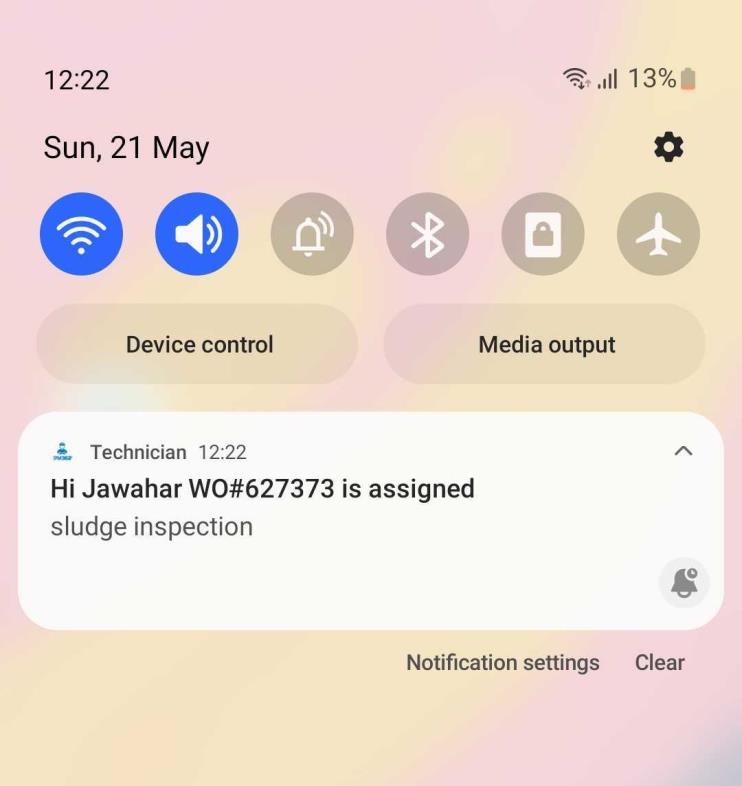
Inspectors can easily view the list of assigned jobs as a list or on a map. The app provides optimized routes for assigned jobs.
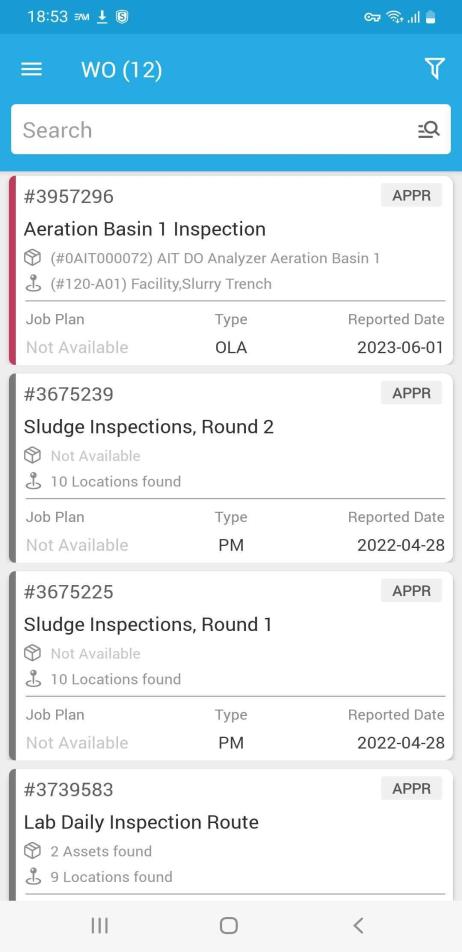

Inspectors can capture inspection data using field types such as text, numeric, selectable values, date, and date & time. Multiple attachments can be added to inspection fields, and the app facilitates capturing the inspector's geo-coordinates.
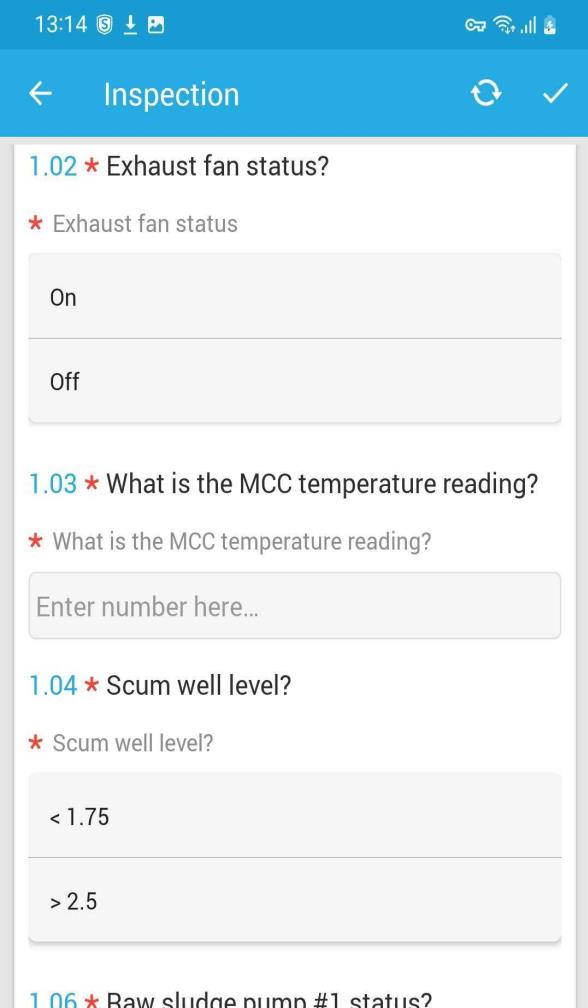
The app shall intimate the user by providing the warning if the any of the entered value is not within the range
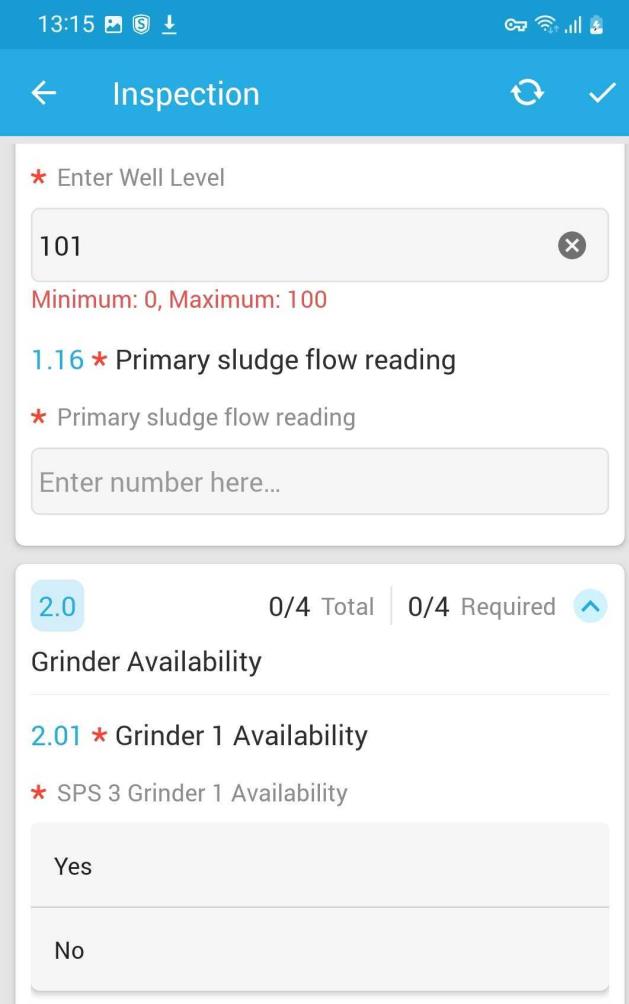
Inspectors can immediately trigger corrective actions upon completing inspections, ensuring relevant teams receive the necessary information.
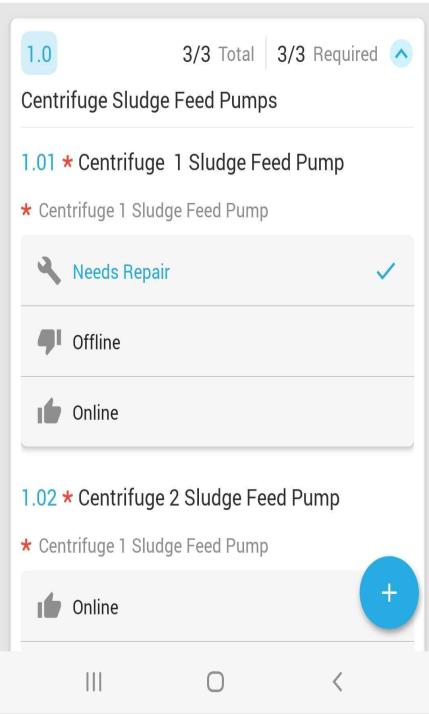
Conclusion
Organizations can unlock a new process efficiency and reliability by adopting mobile-based inspections. These cutting-edge solutions minimize manual work, prioritize accuracy and reliability, reduce asset downtime, enable proactive maintenance by predicting failures, and provide real-time metrics for improved material and asset planning. Ultimately, embracing mobile inspections leads to reduced costs associated with inefficient manual processes, creating a more sustainable and optimized water treatment ecosystem.
It's time to embrace the power of mobile-based inspections and usher in a new era of excellence in water and wastewater treatment plants. Let's revolutionize the way we manage and optimize our invaluable water resources!




